Ultrasonic Pulse Velocity System
For finding voids and cracks, and determining other material properties
- James Instruments - V-Meter MK IV
ASTM C-597, BS 1881-203
The most advanced ultra-sonic test system for accurately identifying basic characteristics of coarse grained materials such as concrete, wood, masonry, ceramic, graphite and more!
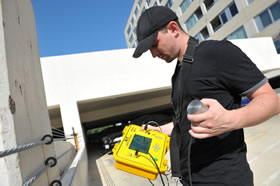
Operator Reviewing V-Meter MK IV Data

V-Meter MK IV evaluating a round Column
Applications
- Locate Honey Combs and Voids in Concrete
- Locate Cracks in Concrete, Ceramics, Masonry or Stone
- Determine Fire Damage Extent in Concrete or Masonry
- Crack Depth Determination
- Determining Young's Modulus ( with optional Shear Wave Transducers )
- Find Hidden Areas of Rotting Wood
Features & Benefits
- System has a direct digital read-out of transit time, and read out of wave form on daylight display, back lit LCD.
- Rugged and splash resistant case is built for tough construction environments. Portable, and light weight with both rechargeable battery and standard A-C power.
- Includes a signal and trigger output for use with external oscilliscope or other data input device. Digital calibration means no special bar required. Trigger levels and Signal amplification can be digitally adjusted.
- Conforms to ASTM C-597, BS 1881-203 and other international standards
- USB interface for computer control. Veelinx software allows complete control of the system as well as data upload to a PC and data analysis.
- Direct reading of calculated P-wave velocity and S-wave velocity. The unit can also calculate modulus of elasticity of material using optional S-Wave Transducers. Direct reading of Poisson's ratio
- A large range of Accessories and Ultrasonic Transducers available. Standard Transducers available from 24KHz to 500 KHz enable the unit to test ceramics, graphite, mass concrete pores, and wood. Exponential Transducers for rough surfaces, as well as underwater transducers are also available. Finally a Pre-Amplifier is available for help with long distances or highly attenuative materials.
Concrete
The V-Meter MK IV™ is widely used and accepted for quality control and inspection of concrete. It can measure and correlate concrete strength to standard strength measurement, permitting non-destructive testing of complete structures. It will identify honeycombs, voids, frozen concrete, cracks and other non-homogenous conditions in concrete. Ultrasonic testing can be applied to new and old structures, slabs, columns, walls, fire damaged areas, hydroelectric structures, pipe, prefab and pre-stressed beams, cylinders and other concrete forms. A wide range of transducers are available.
Wood

V-Meter MK IV used on Wood Direct Mode
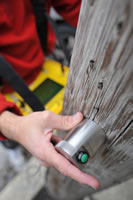
V-Meter MK IV used on Wood Direct Mode
V-Meter MK IV, ultrasonic testing of wood can, nondestructively, detect knots, shakes, splits, grain orientation, windfall cracks and presence of decay and rot. Basic parameters such as modulus of elasticity and density can be calculated. Practical applications include field testing of utility poles and structures, grading in the manufacturing process, fire ladder inspection, examination of laminates and paper roll density. The velocity of ultrasonic energy pulses traveling in a solid material are related to the density and elastic properties of the material. The pulse velocity is thus a measure of density and elastic properties of the material. In transmitting ultrasonic energy through a coarse grained material such as concrete, ceramics or wood, it is necessary for the wave length of energy to be greater than the diameter of the largest grain particle. If it is not, all of the energy will be reflected back by the particles and none will reach the receiver. Typically, the 54 KHZ transducers are used for wood testing. The signal wave length is about 3 inches (75mm). Finer materials require higher frequencies for optimum resolution.
Ceramics

V-Meter MK IV used with Ceramic Sample
V-Meter MK IV has been successfully applied to a range of ceramic products--including tile, refractory bricks and blocks, and kiln furniture--as well as graphite. In an increasing number of refractory and ceramic applications, the ultrasonic pulse velocity testing technique has been used with positive results. UPV testing has enabled users to improve their production processes, increase the integrity and quality of their products, and reduce scrap and reject rates-thereby saving both time and money. In today's economy, such bottom-line benefits are difficult to ignore.
Technical
The instrument has an easy to view display (320 by 240 pixels). The backlit for daylight use, makes field work easier and faster, since the operator can identify good results in seconds without the problems related with the sun light reflection on the screen. The signals can be recorded in the instrument for review on the screen or for transfer to a PC.
Typically, the 54 KHZ transducers are used for concrete testing - the signal wavelength is about 75mm ( 3 inches ). Finer materials require higher frequencies for optimum resolution. The basic V-Meter MK IV™ contains a transmitter, a receiver and a very accurate high speed electronic clock. The transmitter generates an electrical pulse which when applied to a transmitting transducer, converts the electrical energy into a pulse of ultrasonic mechanical vibration. This vibration is coupled with the specimen under test by placing the transducer in contact with the specimen. At another selected point on the specimen another receiving transducer is coupled by mechanical contact. Each transmitted pulse of energy registers on the high speed clock. The first energy wave reaching the receiving transducer is converted back to an electrical signal and turns off the clock. The elapsed time is displayed on the LCD in 0.1 microsecond increments. The unit can also display and store the resulting waveform. This ensures the operator that a proper acoustic contact has been made with the surface of the material under test.
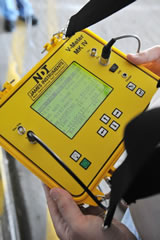
V-Meter MK IV Showing Elapsed Time
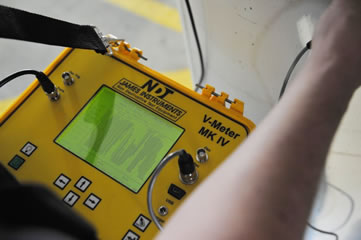
V-Meter MK IV Showing Waveform
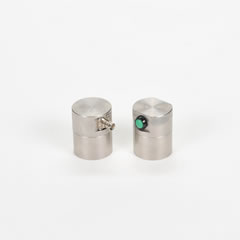
V-Meter MK IV Standard 54KHz Transducers
The standard transducers for the V-Meter MK IV are made for a 54 KHz high Q resonant frequency with a stainless steel housing. The connector is a ninety degrees to the face of the transducer to facilitate operation and getting proper acoustic contact. A push button and special cable are added to the reciever in order to store data while taking readings. The data can later be uploaded to a computer via the Veelinx software. An adaptor is provided to utilize the reciever with standard co-axial cable.
The ultrasonic transducers are typically used in one of three configuartions, direct, semi-direct and indirect mode. Direct is the most sensitive method as the receiving transducer will receive maximum energy from the transmitted pulse. Since the longitudinal pulses leaving the transmitter are propagated mainly in the direction normal to the transducer face. The travel time is affected by the concrete condition along the thickness of the member. Semi-direct transmission is performed with transducers on adjacent faces. This is the next preferred method. Finally, In-Direct the least preffered. with the transducers on the same face. This should be used only when it is impossible to have access to two faces of the material under test. The received amplitude of the method, for the same path length, is only about 2% of that received signal when using the direct method. Testing for shear waves can only be performed with the In-Direct method, with both transducers on the same face as the specimen under test.
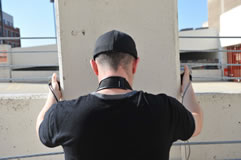
Transducers being used in Direct Mode
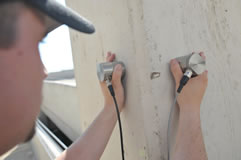
Transducers used in Semi-Direct Mode
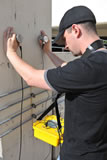
Transducers used in Indirect Mode
Standards
- ASTM C-597 - "Standard Test Method for Pulse Velocity Through Concrete"
- BS EN 12504 - 4:2004 ( Formerly BS 1881-203 ) "Determination of Ultrasonic Pulse Velocity"
- ASTM D2845 - 08 "Standard Test Method for Laboratory Determination of Pulse Velocities and Ultrasonic Elastic Constants of Rock"
- ASTM E494 - 10 "Standard Practice for Measuring Ultrasonic Velocity in Materials"
- ACI 228.2 R "Nondestructive Test Methods for Evaluation of Concrete in Structures"
- ISO1920-7 : 2004 "Testing of Concrete -. Part 7:Non-Destructive Tests on Hardened Concrete"
- IS13311 Part 1: "Non - Destructive Testing of Concrete Methods of Test Part 1 - Ultrasonic Pulse Velocity"
Models
- V-C-400: V-Meter MK IV Complete System (includes two 54 KHz Transducers and Veelinx Software)
- V-C-401: V-Meter MK IV System w/o Software (includes two 54 KHz Transducers)
- V-C-402: V-Meter MK IV Basic System (includes Veelinx Software, but no Transducers)
- V-C-403: V-Meter MK IV Basic System w/o Software(no software, no Transducers)
| Frequency range: | 24 to 500 kHz, based on transducers selected |
| Receiver sensitivity: | 250 micro volts, between 30 kHz and 100 kHz |
| Receiver input impedance: | approximately 100 k Ohms |
| Transit time measurement: | 0.1 to 6553.5 microseconds, direct digital display. |
| Measurement accuracy: | 0.1 microseconds |
| Transmitter output: | pulse 1000/500V, 2 microseconds |
| Transmitter pulse group rate: | selectable 1, 3 or 10 |
| Gain Selection: | 1, 5, 10, 25, 50, 100, 250, 500 |
| Battery: | 14 Volt. 4-10 hours continuous use (Lithium Ion). |
| Display: | 320 by 240; backlit for daylight use |
| Storage: | 1800 plus readings |
| Software: | Windows XP compatible |
| Temperature: | 0° - 50°C |
| Instr. Weight: | 6 lbs. (2.75 Kg) |
| Ship Weight: | 17 lbs. (7.7 Kg) |
| Dimensions: | 4.5" x 8.5" x 10.5" (114.3mm x 223.5mm x 267mm) |
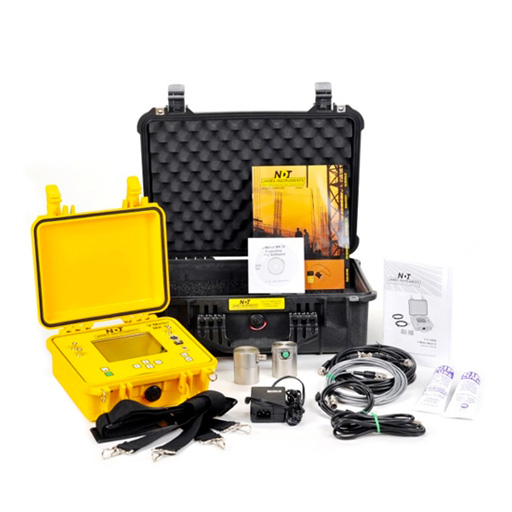
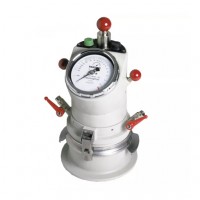
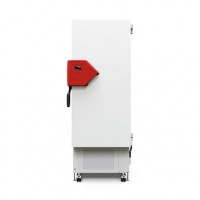
Do you have a question?
min 10 ch